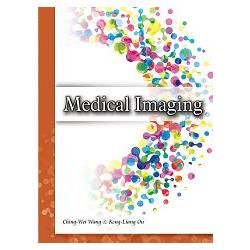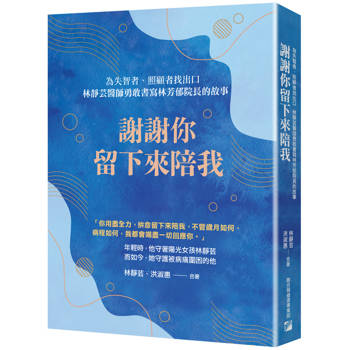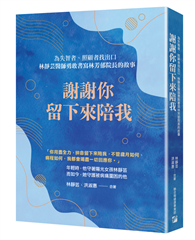The field of medical imaging advances so rapidly that knowledge needs to be frequently updated in order to stay abreast of developments. The book is designed for medical professionals, who wish to update their skills and understanding with the latest techniques in image analysis, for professionals in medical imaging technology, and for computer scientists and electrical engineers, who want to specialize in the medical applications. In this book, we have made an effort to cover the fundamentals of medical imaging and medical image analysis along with brief descriptions of recent developments. The book emphasizes not only on the background theory but also on the practical aspects of medical image analysis, which include the effective use of available image processing tools. A number of medical image analysis systems and databases, both commercial and free, are described in this book. We hope that this book gives readers a sense of the breadth of medical imaging, medical image analysis and associated challenges while providing them with the basic tools to take the challenge.
Chapter 1 presents an overview of medical imaging modalities and their role in medicine. A light introduction about various medical imaging modalities with four kinds of classification approaches is given.
Chapter 2 describes the basic principles of image formation and reviews the essential mathematical foundation and digital image theory.
Chapter 3 presents basic principles of DICOM stands (Digital Imaging and COmmunications in Medicine) and PACS (Picture Archiving and Communication Systems) in medical imaging.
Chapter 4 describes the principles, instrumentation, and data acquisition methods of Magnetic resonance imaging (MRI). A four dimensional cardiac MR image analysis application is discussed.
Chapter 5 provides a complete spectrum of biological microscopic image analysis. Recent development on computer-aided microscopic image analysis tools are discussed.
Chapter 6 discusses the principles, instrumentation, and data acquisition methods of X-ray imaging modalities, including X-ray radiograph imaging, X-ray mammography, and X-ray CT. Public CT databases and computer-aided diagnosis applications are also described.
Chapter 7 provides ultrasound imaging principles and discusses methods for data acquisition and instrumentation control systems.
Chapter 8 presents a detailed introduction to a free and open source image processing software (ImageJ / Fiji), which are popularly adopted in the medical image analysis community. Related or extended medical image analysis tools are also described.
| FindBook |
有 3 項符合
Medical Imaging的圖書 |
 |
Medical Imaging 作者:Ching-Wei Wang,Keng-Liang Ou 出版社:五南圖書出版股份有限公司 出版日期:2016-02-20 語言:繁體書 |
| 圖書選購 |
| 型式 | 價格 | 供應商 | 所屬目錄 | $ 1425 |
技職教育 |
$ 1425 |
技職教育 |
$ 1500 |
醫學總論 |
|---|
| 圖書館借閱 |
| 國家圖書館 | 全國圖書書目資訊網 | 國立公共資訊圖書館 | 電子書服務平台 | MetaCat 跨館整合查詢 |
| 臺北市立圖書館 | 新北市立圖書館 | 基隆市公共圖書館 | 桃園市立圖書館 | 新竹縣公共圖書館 |
| 苗栗縣立圖書館 | 臺中市立圖書館 | 彰化縣公共圖書館 | 南投縣文化局 | 雲林縣公共圖書館 |
| 嘉義縣圖書館 | 臺南市立圖書館 | 高雄市立圖書館 | 屏東縣公共圖書館 | 宜蘭縣公共圖書館 |
| 花蓮縣文化局 | 臺東縣文化處 |
|
|
圖書介紹 - 資料來源:博客來 評分:
圖書名稱:Medical Imaging
內容簡介
作者介紹
作者簡介
Professor Ching-Wei Wang
Professor Ching-Wei Wang obtained her MSc with Distinction in Computer Science from University of Glasgow, UK, and a PhD in Computer Science from University of Lincoln, UK. Ching-Wei is the director of Biomedical Image and Computer Vision Lab in the Graduate Institute of Biomedical Engineering at the National Taiwan University of Science and Technology, and she has years of working experiences in computer vision and machine learning. Her current interests include automatic detection, segmentation, recognition, reconstruction and image registration for 2D/3D microscopic image, 3D/4D Cardiac MRI Image, Ultrasound Image, 3D confocal image, 3D CT scan, X ray image, live cell image and infrared image/video data. Ching-Wei has won a number of awards and prize. Recent ones 2012-2013 are listed below.
• 1st Prize, the 4th Annual Creative Entrepreneurship Competition ─ New Business Development Group, National Taiwan University of Science and Technology, 2013.5
• Young Scholar Award, National Taiwan University of Science and Technology, 2013.1-2015.12
• Excellence in Research Award, National Taiwan University of Science and Technology, 2013.2-2016.1
• Second place, Right Ventricle Segmentation Challenge in 4D Cardiac MRI, 2012 (organized by Université de Rouen, sponsored by Toshiba, PIE Medical Imaging and Medis)
• First Prize, Fetal Femur Ultrasound Image Segmentation Challenge (organized by Oxford University), 2012
• Distinguished Young Scholar 3-Years Research Fund, by National Science Council of Taiwan, 2012/7-2015/6
Ching-Wei’s professional experience in industry is in building real time intelligent automatic computer vision systems. She has a number of patents and has successfully sold some of her technologies to the industry.
Professor Keng-Liang Ou
Professor Keng-Liang Ou obtained his Ph.D. degree from Graduate Institute of Mechanical Engineering, National Chiao Tung University, Taiwan. He joined Taipei Medical University to pursue the cutting-edge research of biomaterials and currently holds the position of Dean of College of Oral Medicine. He is also the Director of Research Center for Biomedical Implants and Microsurgery Devices and the Director of Research Center for Biomedical Devices and Prototyping Production. Besides institutional appointment, Prof. Ou serves as the President of Institute of Plasma Engineering in Taiwan, the Director of the Taiwan Society for Metal Heat Treatment, the President of Taiwan Oral Biomedical Engineering Association and the Director of Yongee Anti-cancer Foundation. Professor Ou devotes himself to the novel research in the fields of biomaterials, bioengineering, biosensing, bioimaging, and translational medicine. In addition, he establishes extensive collaborations with industry and has played a leading role in developing medical devices for health professionals worldwide. He is the leader and organizer for the biomedical product design, production, manufacturing, testing, legalization and market planning, with supports from teams of scientists and researchers with expertise in different fields. With the outstanding accomplishments in research and invention, Professor Ou received the Award of the Ten Outstanding Young Persons of Taiwan in the year of 2011 and the TMU Distinguished University Professor Award in 2014.
Professor Ching-Wei Wang
Professor Ching-Wei Wang obtained her MSc with Distinction in Computer Science from University of Glasgow, UK, and a PhD in Computer Science from University of Lincoln, UK. Ching-Wei is the director of Biomedical Image and Computer Vision Lab in the Graduate Institute of Biomedical Engineering at the National Taiwan University of Science and Technology, and she has years of working experiences in computer vision and machine learning. Her current interests include automatic detection, segmentation, recognition, reconstruction and image registration for 2D/3D microscopic image, 3D/4D Cardiac MRI Image, Ultrasound Image, 3D confocal image, 3D CT scan, X ray image, live cell image and infrared image/video data. Ching-Wei has won a number of awards and prize. Recent ones 2012-2013 are listed below.
• 1st Prize, the 4th Annual Creative Entrepreneurship Competition ─ New Business Development Group, National Taiwan University of Science and Technology, 2013.5
• Young Scholar Award, National Taiwan University of Science and Technology, 2013.1-2015.12
• Excellence in Research Award, National Taiwan University of Science and Technology, 2013.2-2016.1
• Second place, Right Ventricle Segmentation Challenge in 4D Cardiac MRI, 2012 (organized by Université de Rouen, sponsored by Toshiba, PIE Medical Imaging and Medis)
• First Prize, Fetal Femur Ultrasound Image Segmentation Challenge (organized by Oxford University), 2012
• Distinguished Young Scholar 3-Years Research Fund, by National Science Council of Taiwan, 2012/7-2015/6
Ching-Wei’s professional experience in industry is in building real time intelligent automatic computer vision systems. She has a number of patents and has successfully sold some of her technologies to the industry.
Professor Keng-Liang Ou
Professor Keng-Liang Ou obtained his Ph.D. degree from Graduate Institute of Mechanical Engineering, National Chiao Tung University, Taiwan. He joined Taipei Medical University to pursue the cutting-edge research of biomaterials and currently holds the position of Dean of College of Oral Medicine. He is also the Director of Research Center for Biomedical Implants and Microsurgery Devices and the Director of Research Center for Biomedical Devices and Prototyping Production. Besides institutional appointment, Prof. Ou serves as the President of Institute of Plasma Engineering in Taiwan, the Director of the Taiwan Society for Metal Heat Treatment, the President of Taiwan Oral Biomedical Engineering Association and the Director of Yongee Anti-cancer Foundation. Professor Ou devotes himself to the novel research in the fields of biomaterials, bioengineering, biosensing, bioimaging, and translational medicine. In addition, he establishes extensive collaborations with industry and has played a leading role in developing medical devices for health professionals worldwide. He is the leader and organizer for the biomedical product design, production, manufacturing, testing, legalization and market planning, with supports from teams of scientists and researchers with expertise in different fields. With the outstanding accomplishments in research and invention, Professor Ou received the Award of the Ten Outstanding Young Persons of Taiwan in the year of 2011 and the TMU Distinguished University Professor Award in 2014.
目錄
Contents
Preface
Chapter 1 Introduction to Medical Imaging
1.1 Classifications of Electromagnetic Radiation Spectrum
1.2 Classification of Diagnostic Medical Imaging by the Tissue Property Measured (anatomic structure or molecular function)
1.3 Classification of Diagnostic Medical Imaging by the Sources (Ionizing or non-ionizing radiation)
1.4 Classification of Diagnostic Medical Imaging by the Acquisition Mode (planar imaging or cross-sectional imaging)
Chapter 2 Digital Image
2.1 Digital Image Formation
2.2 Image Coordinate System
2.3 Color Image Format
2.4 Color Space and Color Conversion
2.5 Neighborhood Relations
2.6 Image Resolution
Chapter 3 DICOM and PACS
3.1 Introduction
3.2 Hexadecimal (binary) Format (16-bit)
3.3 Little Endian (default byte-ordering type)
3.4 DICOM Data Dictionary
3.5 Extract Information Using Matlab
3.6 Storing Image Data
3.7 DICOM Information Hierarchy
3.8 Medical Images in DICOM
3.9 Image Compression
3.10 Access DICOM Image using Matlab
Chapter 4 Magnetic Resonance Imaging
4.1 Fundamental Concepts
4.2 Fourier Transformation for MRI Reconstruction
4.3 MR Parameters
4.4 4D Cardiac MR Image Analysis
Chapter 5 Biological Microscopic Image
5.1 Introduction
5.2 High-Throughput and High-Content Analysis
5.3 Reconstruction of Neuronal Structures
5.4 Multi-Dimensional Imaging of Dynamic Processes
5.5 Computer-Aided Microscopy Image Analysis
Chapter 6 X-ray and Computed Tomography (CT)
6.1 Introduction
6.2 Acquisition Devices in Diagnostic
6.3 How CT Scans are Performed in Clinical Practice
6.4 Principles of X-ray Computed Tomography (CT)
6.5 Projection Geometries in Computed Tomography (CT)
6.6 Public Computed Tomography Database
6.7 Computer Aided Diagnosis Applications
Chapter 7 Ultrasound Image Analysis
7.1 Introduction
7.2 Resolution
7.3 Machine Controls to Optimize Ultrasound Image
7.4 Modes of Echo Display
7.5 Interaction with Tissues and Artifacts
7.6 Advantages and Disadvantages of using Ultrasound in Medicine
7.7 Diagnostic Examination and Therapy
7.8 Automatic IVUS Image Segmentation
Chapter 8 An Open Source Image Processing Software (ImageJ / Fiji)
8.1 Introduction
8.2 ImageJ Distributions
8.3 Software Packages Built on Top of ImageJ
8.4 ImageJ Interoperability
8.5 Installing and Maintaining
8.6 Basic Image Processing
8.7 Macros, Plugins and Scripts
8.8 ImageJ Plugins for Users
8.9 ImageJ Plugins for Developers
8.10 Build ImageJ Distributions
Preface
Chapter 1 Introduction to Medical Imaging
1.1 Classifications of Electromagnetic Radiation Spectrum
1.2 Classification of Diagnostic Medical Imaging by the Tissue Property Measured (anatomic structure or molecular function)
1.3 Classification of Diagnostic Medical Imaging by the Sources (Ionizing or non-ionizing radiation)
1.4 Classification of Diagnostic Medical Imaging by the Acquisition Mode (planar imaging or cross-sectional imaging)
Chapter 2 Digital Image
2.1 Digital Image Formation
2.2 Image Coordinate System
2.3 Color Image Format
2.4 Color Space and Color Conversion
2.5 Neighborhood Relations
2.6 Image Resolution
Chapter 3 DICOM and PACS
3.1 Introduction
3.2 Hexadecimal (binary) Format (16-bit)
3.3 Little Endian (default byte-ordering type)
3.4 DICOM Data Dictionary
3.5 Extract Information Using Matlab
3.6 Storing Image Data
3.7 DICOM Information Hierarchy
3.8 Medical Images in DICOM
3.9 Image Compression
3.10 Access DICOM Image using Matlab
Chapter 4 Magnetic Resonance Imaging
4.1 Fundamental Concepts
4.2 Fourier Transformation for MRI Reconstruction
4.3 MR Parameters
4.4 4D Cardiac MR Image Analysis
Chapter 5 Biological Microscopic Image
5.1 Introduction
5.2 High-Throughput and High-Content Analysis
5.3 Reconstruction of Neuronal Structures
5.4 Multi-Dimensional Imaging of Dynamic Processes
5.5 Computer-Aided Microscopy Image Analysis
Chapter 6 X-ray and Computed Tomography (CT)
6.1 Introduction
6.2 Acquisition Devices in Diagnostic
6.3 How CT Scans are Performed in Clinical Practice
6.4 Principles of X-ray Computed Tomography (CT)
6.5 Projection Geometries in Computed Tomography (CT)
6.6 Public Computed Tomography Database
6.7 Computer Aided Diagnosis Applications
Chapter 7 Ultrasound Image Analysis
7.1 Introduction
7.2 Resolution
7.3 Machine Controls to Optimize Ultrasound Image
7.4 Modes of Echo Display
7.5 Interaction with Tissues and Artifacts
7.6 Advantages and Disadvantages of using Ultrasound in Medicine
7.7 Diagnostic Examination and Therapy
7.8 Automatic IVUS Image Segmentation
Chapter 8 An Open Source Image Processing Software (ImageJ / Fiji)
8.1 Introduction
8.2 ImageJ Distributions
8.3 Software Packages Built on Top of ImageJ
8.4 ImageJ Interoperability
8.5 Installing and Maintaining
8.6 Basic Image Processing
8.7 Macros, Plugins and Scripts
8.8 ImageJ Plugins for Users
8.9 ImageJ Plugins for Developers
8.10 Build ImageJ Distributions
|











